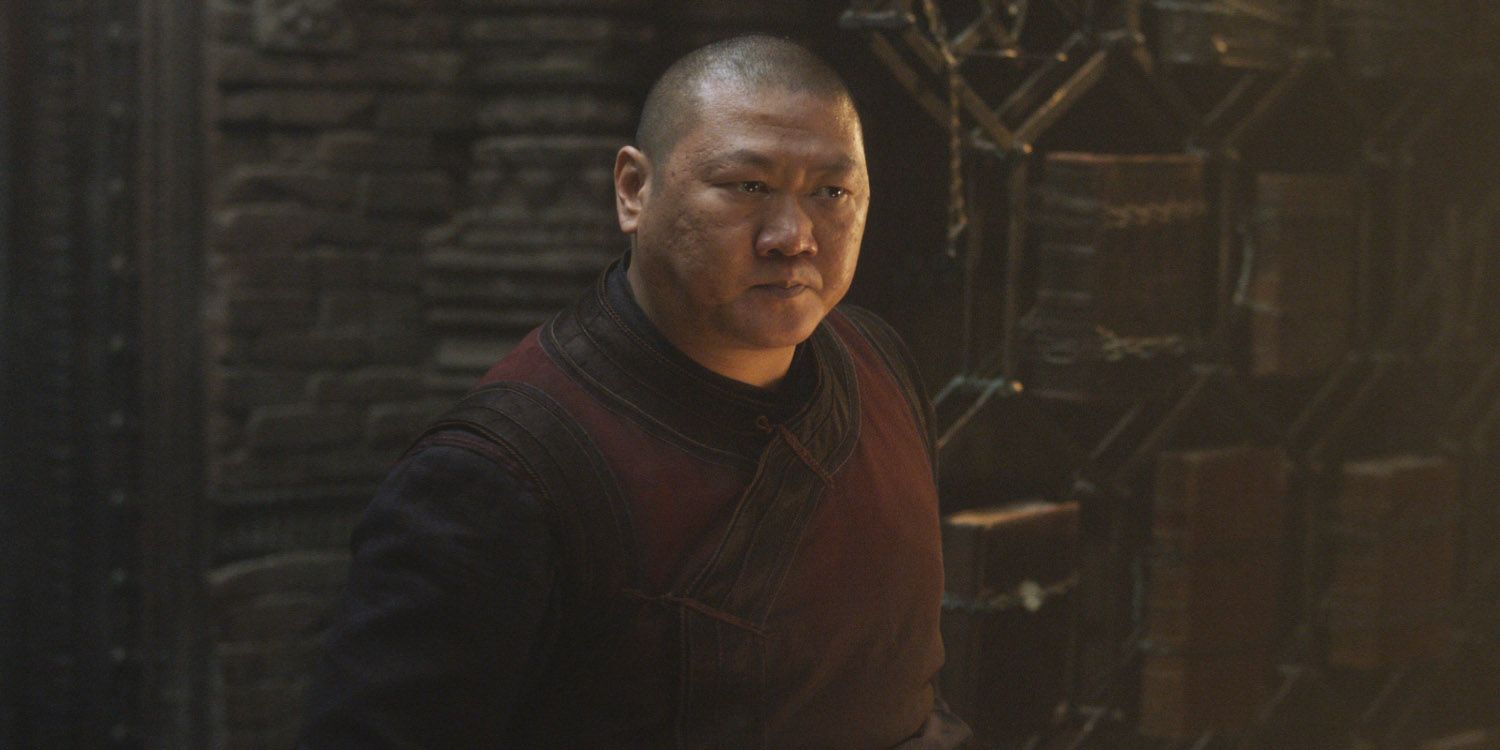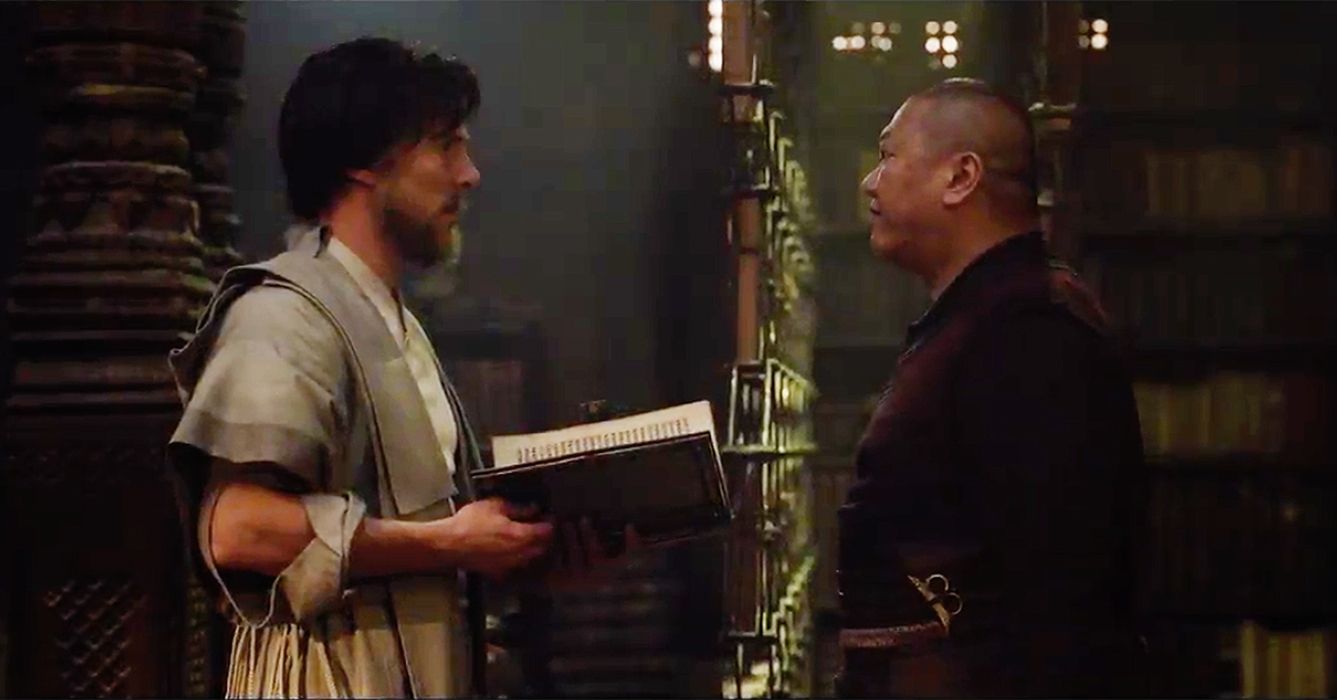Introduced as the manservant of Doctor Stephen Strange in the mid-'60s, Marvel Comics' Wong was conceived in a less inclusive era, modeled on the common mid-20th Century trope of the diligent Asian butler to a Caucasian master (from “The Green Hornet’s” Kato, to “Bonanza’s” Hop Sing). But today, just as Wong has evolved into a character of greater individual agency and a more richly detailed persona, the “Doctor Strange” filmmakers have developed a more contemporary spin on Stephen Strange’s ally.
Now, actor Benedict Wong (“Maro Polo,” “The Martian”) – a dedicated comics fan in his youth – details how his version of the classic Marvel hero upends those outdated and, frankly, offensive tropes in a conversation with CBR.
CBR: For you, this was opportunity to take a character that is a little old-fashioned in its original conception, is a little secondary and subservient, and do something fresh and new and proactive with it. Tell me about the fun of looking what Wong has been in the comics and evolving him into a stronger character for this film.
Benedict Wong: Absolutely. Well, you know, huge thanks to Marvel for opting for birthright casting. When I looked at Marvel Comics and "Doctor Strange," I loved it – I was just looking at Wong, and I just thought, “Yeah, fantastic comics, but you know, obviously in the '60s there were certain aspects..." These elements of manservant, sidekick irks you as an actor of East Asian descent, and you think, “No. Well, wow -- we need to just simply update this," and that’s exactly what [Kevin] Feige and Scott [Derrickson] just kind of literally did: they went, “No, no, no – absolutely, we’re with you.”
And that was wonderful, to kind of go, “Oh, this is great, now we can really do something. Now, we can create someone who is this drill sergeant; stoic, loyal to the cause, serious, understands the severity that lies ahead.” And a librarian – not your average librarian: overdue books are fined with broken fingers.
This element of, “we’re not going to fuck with this one,” that element totally appeals to me, and to create what is [Marvel Studios'] first Asian superhero. To me, having the character that stands alongside Strange, that’s appealing. I think, as an audience, that’s refreshing. That’s what we want.
What was fun about figuring out exactly what his persona was going to be? How you wanted to kind of give him kind of some spark and some life, within that stoic quality, that he has when we first meet him?
Well, as we sort of guide ourselves through the story, and we see him in his day to day, we see what he’s like. Obviously, if I recall the scenes when he’s the drill sergeant and the captor, he is kind of getting everybody prepared. There is something that lies ahead that’s his job, that’s what he’s lined up to do, and we’re not messing around here!
What was your favorite part of the action hero element of it on set, something you got to do where the little kid in you was having a good time that day?
I think when we did some additional photography, and all of a sudden I was given the Wand of Watoomb. It was kind of like, “Oh, right, what do you do with this?” I had never really been taught by any choreographer what to do with the wand. So I started doing my own thing, sort of making up my own moves, and making them my own. And then we did some lovely fight choreography when he’s combating the zealots, so that was a great moment.
Between the fight choreography or the spell-casting movement that you did with your hands, was there anything where you were like, “I’m having a hard time with this? Like, “I’ve really got to figure this out?”
No, it was fairly all right, actually, because I had some sort of kung fu training in the past as a kid. I understand this idea of breathing and chi and melding with movement, and I think that’s going to look really visually fantastic.
You’ve mentioned that you spent a lot of your youth reading comic books. What were you reading as a kid? What were the things that you loved the most?
It was "Peter Parker: The Spectacular Spider-Man," "The Amazing Spider-Man" and obviously "Web of Spider-Man" – which I’ve got a #1 copy, yes!
That was my go-to. I was always reading these comics, religiously, every month. What I always loved about the Marvel movies, within the comics, they always had the [editor’s notes], “Please go to Fantastic Four #__. Obviously, I can’t afford all of them, and so I would get a bus from my home in Salford to this comic store called Odyssey 7, which is no longer there, and just spend hours just trolling through the comics until it was time to go. It’s like, “Right, off I go!” It's one of those warm, fuzzy feelings.
Now you’ve sat here and you’re in a Marvel movie, and you’re a little crestfallen when I was watching Marvel films going “Where are my heroes? Where are the East Asian superheroes?” And it’s like, “Oh, it’s not happening.”
And then at one point in the year, I was meeting [inaudible], “What are you up to, blah, blah, blah?” “I’m doing this thing, ‘Doctor Strange.'” “Oh, okay.” And then tapping on the Internet, I saw this picture, and it was Wong. I thought, I can’t believe – I just sat there, just like my mouth was open. I just don’t know – “I have to get this, on behalf of my ancestors.” It was just like, “Wow, I’ve got to do this.” I was filming “Marco Polo” at the time, around the world, and I was looking at the dates of when they were filming and I said, “It’s not going to happen, is it? I don’t think it’s going to happen.”
Then I got a call. [Marvel] called me when I was in Budapest. I went on tape. I was then in Slovakia, I sent something again. By the time I was in Malaysia, “You’re in! You got the gig; you’re going to have an amazing time.” I was dressed like Kublai Khan in Malaysia, kind of jumping up and down inside this armor, going, “I can’t believe I’m going to be in the Marvel film!” It was just a real joy.
In the comics, Marvel was as progressive as anybody in introducing different kinds of characters of different ethnic backgrounds. Did you discover any as a kid, or was it a little later that they started introducing more Asian superheroes?
No, I didn’t come across any. The one that I’d maybe thought, “Oh, was that an Asian guy?” was the Sub-Mariner. He looks kind of Asian -- and that’s it. We are looking for our heroes that represent us, and a lot has been said, but I think our piece is really championing diversity. We have two strong female leads, with Rachel [McAdams], and Tilda [Swinton]; [we have] posh Benedict [Cumberbatch] and the not so posh Benedict. These are wonderful colors, I think, and really have a real stamp on diversity. Yeah, I’m very proud of the piece.
Especially with Tilda. She’s incredible. A lot of things have been said... I don’t think, if someone else was cast in it, that would irk me, but there’s no one else that could play that role but her. I’m so pleased how things have turned out.
Are you looking forward to those moments where you’ll meet the Asian kids who see you in the movie, who say, “Finally – there’s our guy, in a Marvel movie.”
Absolutely, absolutely. I mean, that’s one of those key things that really, really reward you, that you can somehow bestow dreams in little kids that kind of go, “Ah, he can do it. I can do it.”
How often have you been on a movie where there’s two guys on the call sheet named “Benedict?”
Yeah, this is the first! Yeah, yeah!
Did you each have an assigned name so you knew who was talking to you? Was one Ben or Benny or B-Wong or--?
I think I was called Good Benedict, and he was called Evil. No! People call me Benny as well, definitely, yes. So as long as it says “Benedict” on the check, I’m fine.
Opening Friday in North America, “Doctor Strange” stars Benedict Cumberbatch, Chiwetel Ejiofor, Rachel McAdams, Benedict Wong, Michael Stuhlbarg, Benjamin Bratt, Scott Adkins, Mads Mikkelsen and Tilda Swinton.


